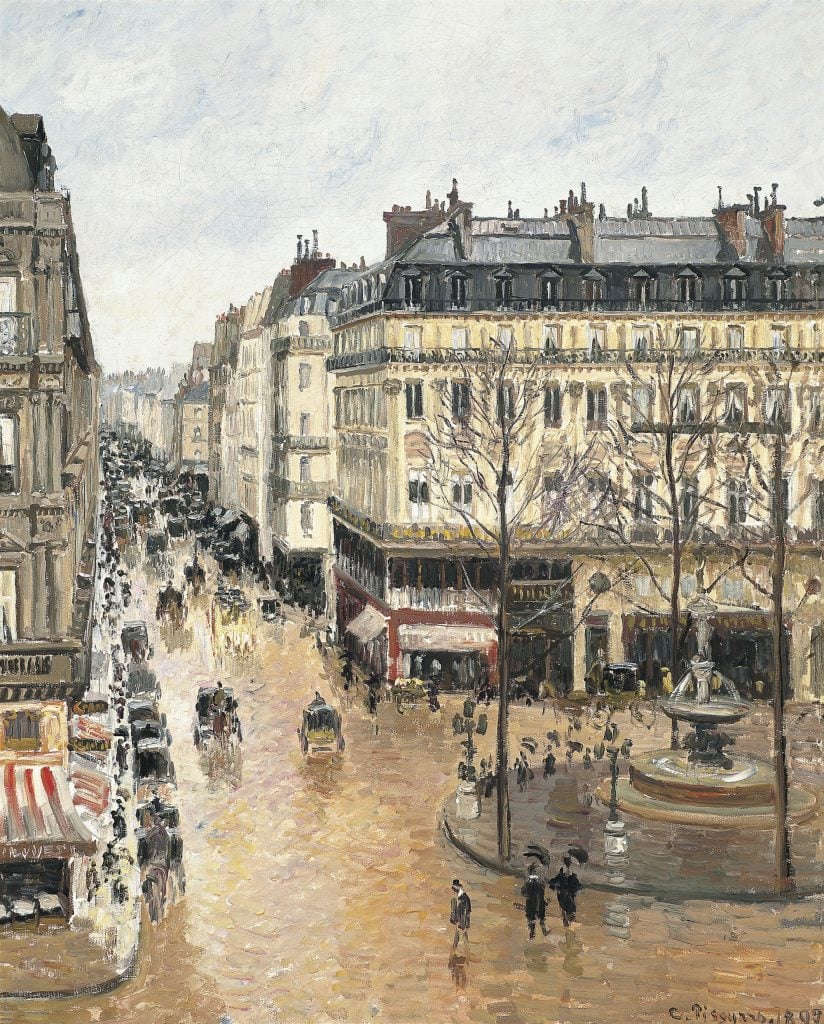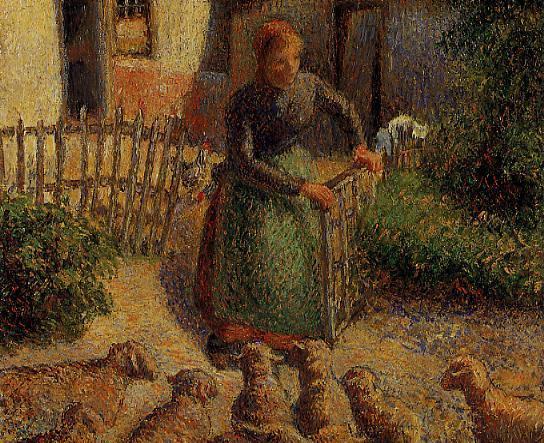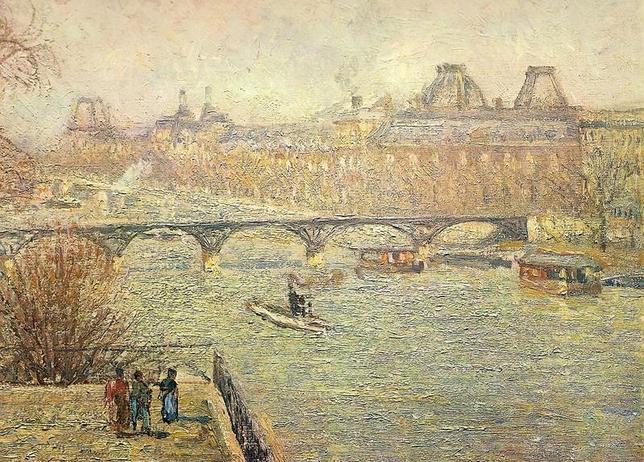Law & Politics
Court Denies Claim of Heirs to Nazi-Looted Pissarro Painting
The case has been raging for a decade.

The case has been raging for a decade.

Sarah Cascone

A Camille Pissarro painting that a Jewish woman was forced to sell to the Nazis in 1939 will stay in a Spanish museum, rather than be returned to her heirs, a federal judge in Los Angeles has ruled.
Judge John F. Walter of the United States District Court for the Central District of California found that under Spanish law, the Thyssen-Bornemisza Museum in Madrid could not be compelled to return Rue Saint-Honoré, Après-midi, Effet de Pluie (1887).
Despite ruling in the museum’s favor, Walter concluded his opinion by urging the museum to “pause, reflect, and consider” if a more mutually-agreeable resolution might be reached “in light of Spain’s acceptance of the Washington Conference Principles and the Terezin Declaration, and, specifically, its commitment to achieve ‘just and fair solutions’ for victims of Nazi persecution.”
It seems unlikely that the museum will feel compelled to follow such a recommendation.
Evelio Acevedo Carrero, the managing director of the Thyssen-Bornemisza Collection Foundation, told the New York Times that he was pleased with the decision. “The judge makes it very clear that the foundation is the legitimate owner,” he said. The museum’s only possible concession might be a plaque placed next to the work acknowledging its ties to the Nazis.
The painting was seized from Lilly Cassirer in 1939, when she and her husband were attempting to flee Germany. They were forced to sell the Pissarro for a nominal amount (equivalent to $360) in exchange for their exit visas. The money was transferred into a blocked account that they were unable to access.
Following the war, Cassirer sought restitution from the German government, but the painting’s whereabouts were unknown. While the museum believes she was fully compensated for its loss, Walter noted that in her postwar settlement, Cassirer “did not waive her right to seek restitution or return of the painting.”

Camille Pissarro, Shepherdess Bringing in Sheep (1886)
Unbeknownst to the family, the painting surfaced in the US in 1951, before being purchased in 1976 by Baron Hans-Heinrich Thyssen-Bornemisza of Switzerland. He later sold his art collection to the kingdom of Spain, which in 1992 opened the museum that bears his name. The Pissarro has been on display there ever since.
According to Acevedo Carrero, the painting is currently insured for €9 million ($10.1 million), although he declined to give an estimated value for the work.
Cassirer’s relatives learned of the painting’s whereabouts in 2000, and in 2005 filed a suit in California court seeking the work’s restitution. The “prolonged and bitterly contested litigation,” as per Walter’s opinion, has been raging over the last decade (see Spanish Museum Urged to Release Nazi-Looted Pissarro).
The most recent ruling hinges on something called adverse possession of personal property, according to which if you possess someone else’s property in a public manner for a long enough period of time, you become its legal owner. While this is illegal in California, Walter ultimately found that Spanish law, which allows it, superseded the state’s laws in the case, as Spain had a much more significant relationship to the painting.
Laura Brill, a lawyer for the Cassirer family, reminded the Times that the painting was undisputedly stolen from the Cassirers by the Nazis, and stressed the importance of museums and governments cooperating in the restitution of such looted artworks.
The Cassirer family is expected to appeal the decision.

Camille Pissarro La Seine vue du Pont-Neuf, au fond le Louvre (1902) has been found in Gurlitt’s collection and determined as Nazi-looted.
Image: Kunstmuseum Bern via bundesregierung.de
Other allegedly Nazi-looted Pissarros have been in the news of late. Earlier this year, the artist’s La Seine vue du Pont-Neuf, au fond le Louvre was discovered in the Cornelius Gurlitt art trove (see Camille Pissarro Painting Found in Gurlitt Trove Confirmed as Nazi Loot).
Last month, a non-binding resolution from Oklahoma legislators demanded the University of Oklahoma return Pissarro’s Shepherdess Bringing in Sheep to French Holocaust survivor Leone Meyer (see Holocaust Survivor Sues for Return of Looted Camille Pissarro Painting).
In response, reports the Oklahoma Daily, the university issued a statement claiming that the painting’s full ownership history is not known, and that “simply transferring the painting, which was properly acquired, without first knowing all the facts would . . . set a very poor precedent and risk disgracing all prior good-faith purchasers and owners of the painting.”